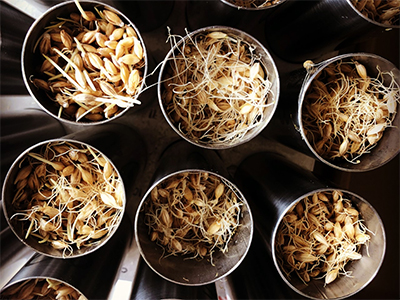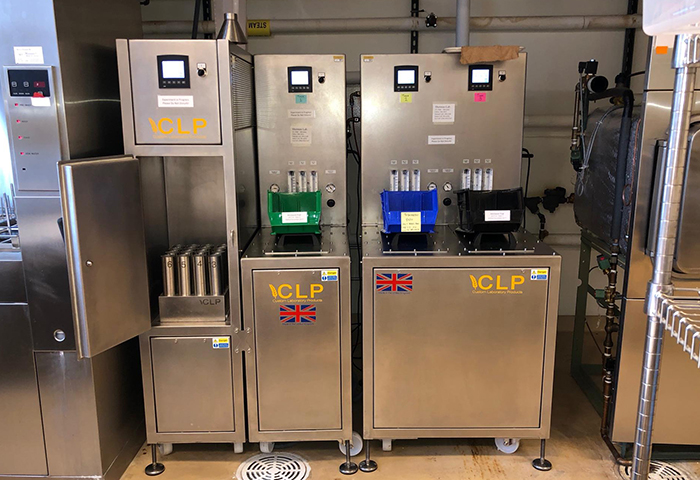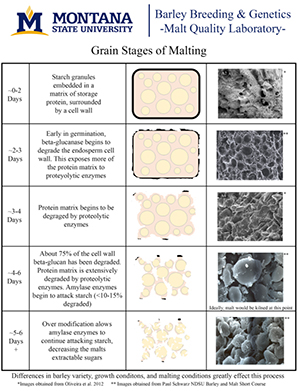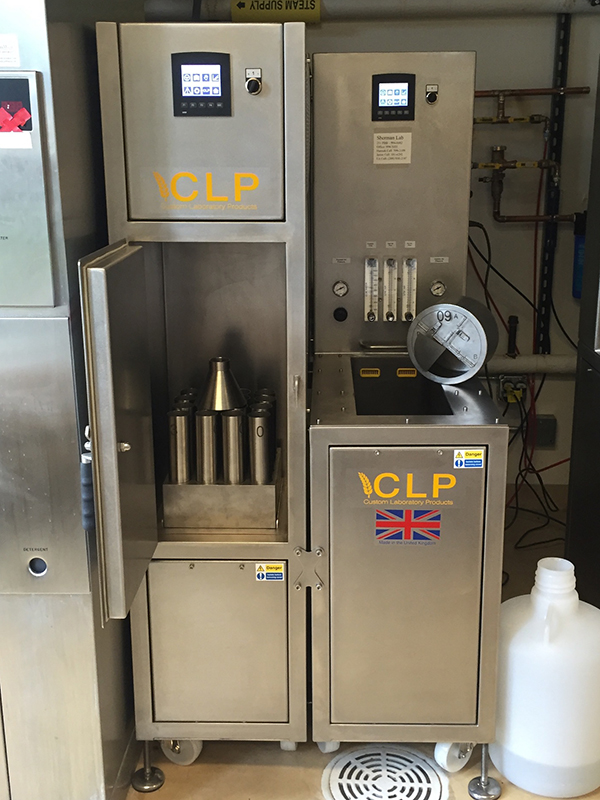Micro-malting
Equipment: CLP Steep/Germ and Steep/Germ Combination Kiln (Combi)
Malting is a tradition that likely pre-dates recorded history
Purpose – to modify indigestible grain into a friable product for beer and food production
Three Stage Process
Steep
~ 2 days, involves grain submersions and air rests
-brings the grain from 8-12% moisture up to 42-48% moisture, triggering germination (like spring rains)
-Germination
~3-5 day process where grain is kept at high humidity
-intermittent turning to prevent root matting and evenly treat the grain
-Kiln
~24 hour process
-we use low slow heat to dry down to ~4% moisture
-this is considered a “base malt” with preserved enzymes
Check out the biological grain stages of malting in this document!
Our Malting Setup:
We are well matched to the systems you would find in a commercial craft malthouse!
Malting is a complex and diverse process much like brewing. It requires understanding of the biological processes that occur, an artistic nature to bring out the great sensory aspects of malt, as well as hard work and passion. Our program is highly unique for having the ability to malt in house and it makes us better at what we do!
Equipment:
We currently have a total of 4x CLP steep/germ tanks and 2x kilns. By timing our process the two kilns are able to support all four steep/germ tanks. We are in the process of adding an additional tank and kiln and down the road hope to continue expanding our capacity!
To support MSU Barley Breeding and third party clients we are able to malt three scales:
Milli malting: up to ~6kg barley - to support our brewhouse and other unique projects
Micro malting: 120g barley samples - our typical research scale
Pico malting: 5.6g barley samples -- for early generation breeding data
*Follow the links to learn more about each scale
Steeping and Germination
We have three identical Steep/Germ tanks. This allows us to malt 3 Milli batches - 45 Micro samples - or 276 Pico samples per week. Typically our malt spends ~48 hours in the steep phase and ~96 hour in germination.
Control:
Timing: we program when the water fills/drains to create custom steeping regimes
Temperature: Each tank has a water jacket for insulation. The system is water chilled (with the assistance of an external chiller) and also has a heating mechanism - typically we set temperatures in the range of 15-18C (59-64F) and the malters balance the rest.
Agitation: Inside the tanks there are turning rollers -- these run periodically rotating the round malting cages to keep the malt evenly treated and preventing the rootlets from matting.
Aeration: The malters and connected to pressurized air - we are able to periodically inject dry or wet air through pores at the bottome of the tank.
Kilning
Typically for the breeding program we run a low slow drying profile (think Lager style) to preserve the potential enzymes of each exerpimental line - this is a selection criteria! Our kiln is capable of doing a lot of fun regimes though -- currently we have developed recipes to also produce Pilsen, Vienna, Munich, and Caramel malts!
Control:
Temperature: our kiln has a wide temperature range from ~25C - 130C (55-265F)
Humidity and Reciruculation: controlling how much of your off kiln air is returned to the flow is an important control parameter in kilning -- the returned air is rich with moisture removed from the green malt -- keeping this moisture in the mix can change the color and sensory profiles of your malt - particularly when considering your temperature.
Timing: We can build custom temperature regimes based on three methods: x temp for x amount of time, and x temp kicked to the next x temp based on either a temperature or a moisturer differential below and above the green malt bed. This gives us a lot of flexibility in our kining regimes!
Check out this video showing our micro-malting process!
 |



